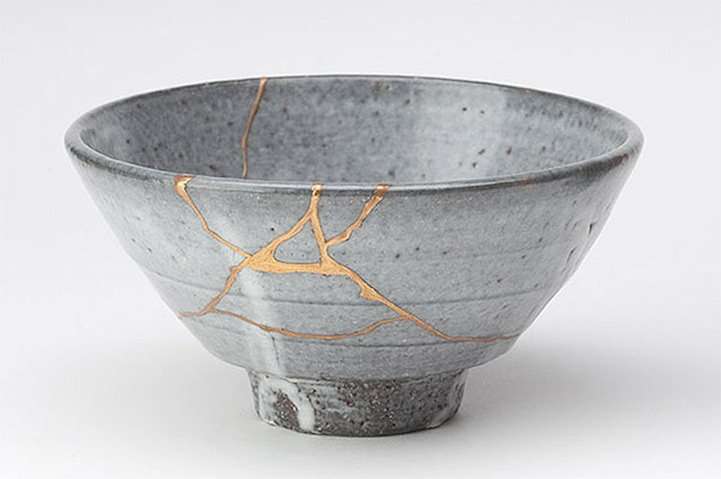Translated to “golden joinery,” Kintsugi (or Kintsukuroi, which means “golden repair”) is the centuries-old Japanese art of fixing broken pottery with a special lacquer dusted with powdered gold, silver, or platinum. Beautiful seams of gold glint in the cracks of ceramic ware, giving a unique appearance to the piece.
This repair method celebrates each artifact's unique history by emphasizing its fractures and breaks instead of hiding or disguising them. Kintsugi often makes the repaired piece even more beautiful than the original, revitalizing it with new life.
Kintsugi art dates back to the late 15th century. According to legend, the craft commenced when Japanese shogun Ashikaga Yoshimasa sent a cracked chawan—or tea bowl—back to China to undergo repairs. Upon its return, Yoshimasa was displeased to find that it had been mended with unsightly metal staples. This motivated contemporary craftsmen to find an alternative, aesthetically pleasing method of repair, and Kintsugi was born.
Since its conception, Kintsugi has been heavily influenced by prevalent philosophical ideas. Namely, the practice is related to the Japanese philosophy of wabi-sabi, which calls for seeing beauty in the flawed or imperfect. The repair method was also born from the Japanese feeling of mottainai, which expresses regret when something is wasted, as well as mushin, the acceptance of change.
There are 3 predominant styles of Kintsugi: crack, piece method, and joint-call. While, in each case, gold-dusted epoxy is used to fix the broken pottery, the methods themselves vary. Objects mended using the crack approach are touched up with minimal lacquer, while works restored with the piece method feature replacement fragments made entirely of epoxy. Finally, pieces fixed using the joint-call technique employ similarly-shaped pieces from other broken wares, combining 2 aesthetically different works into 1 uniquely unified product.

inkspill13 on November 15th, 2017 at 04:29 UTC »
Wabi-sabi is a wonderful and thoughtful philosophy of aesthetics. If anyone is interested in learning more about it I recommend Leonard Koren's book Wabi-Sabi for Artists, Designers, Poets, and Philosophers. It does a lovely job of elucidating the nuances of wabi-sabi's approach to finding beauty in impermanence without being a dense read.
phroexx on November 15th, 2017 at 00:45 UTC »
A more common name is "kintsugi" - fixing with gold. search for kintsukuroi and all you'll find is the one image. Search for kintsugi you'll find loads of stuff.
Masterchrono on November 15th, 2017 at 00:27 UTC »
Can you fix my broken heart though?